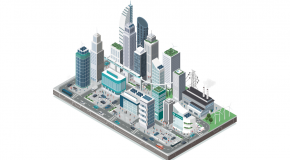Cities are struggling to keep up the changes we see around us. From new technologies that are changing how we live and work to accommodating unprecedented urban population growth.
Australia has one of the highest population growth rates among medium and large OECD countries. The overall population has increased by 40% since 1990 and is forecast to increase by another 40% by 2040. This is increasingly putting pressure on transport infrastructure, air quality and energy resources. Like many cities, Australia's state capitals need smarter and more flexible infrastructure to address these challenges.
Infrastructure that can make better use of existing space and that can adapt in accordance with uncertain futures. For example,
- Roads that work as well for today's petrol vehicles as for tomorrow's autonomous electric cars
- Buildings that can transform depending on the needs of their visitors or inhabitants
- A rail system that can double its capacity simply through changes to its operating algorithms




